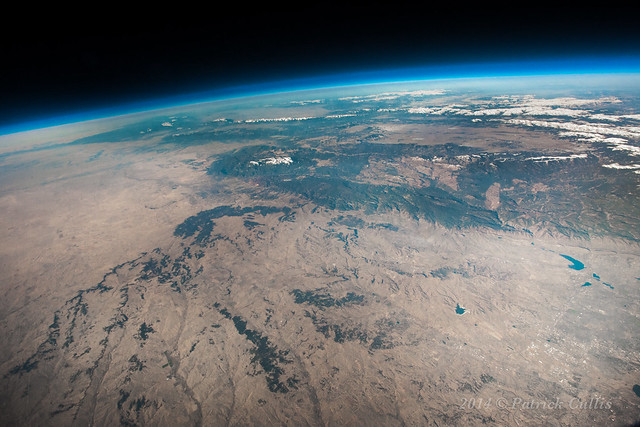I've been going back over some of the photos from my balloon flights the past few years and started wondering if I could stitch a few of them together in to a panorama. Turns out, yes I can! I can barely believe how well they are turning out. If you follow the link to my
Google+ version it will allow you to zoom in and look around at everything.
 |
| Detail visible in Boulder and the Flatirons when you zoom in. |
 |
| Silverthorne, CO and Dillon Reservoir. Coming from the lower right is I-70 heading up to the Eisenhower Tunnel and the split off for Loveland Pass. To the left you can see the ski slopes of Breckenridge. Behind Breck is Copper Mountain, and it's not as clear, but Vail, the wide open back bowls, and blue sky basin. |
 |
| Berthoud Pass on the way to Winter Park and Mary Jane is one of my favorite bits. |
 |
| Barker Reservoir and Nederland, Colorado up in the foothills from Boulder. A bit further up from Ned is Eldora (town and ski area) and Indian Peaks Wilderness Area. |
 |
| Launching an Ozonesonde from Boulder |
 |
| Everything better be secure. Burst is not gentle... |
 |
| This one didn't even hit the ground! |
A couple of years ago I did another flight in order to capture the moon above the haze of our atmosphere. I made a video of that launch from some GoPro footage and some other small cameras.
Balloon Flight from
Patrick Cullis on
Vimeo.
Video and photography from two high altitude balloon launches from Boulder, Colorado. Views of Boulder, Denver, and the Continental Divide from over 85,000 feet as well as video of launch and burst. This video was from an earlier balloon flight where I was launching in order to capture the moon near the horizon after the package had made it above the bright glow of the atmosphere. Out of roughly 700 images, the moon was in a grand total of 3...
 |
| The balloon bursting at over 100,000 feet! |
The balloon starts out roughly six feet across, but by the time it gets to 100,000 feet it is almost 30 feet in diameter! This sequence of four images is from a GoPro running at 48 frames per second.
 |
| Launching an ozonesonde balloon at the South Pole in 2009 |
I learned about launching balloons working for NOAA measuring the ozone layer. One of the trickiest places to launch balloons is at the South Pole while measuring the annual formation of the Antarctic Ozone Hole. I wintered over during the 2009 season and during the six months of darkness the rubber balloons are unable to stretch without the warmth of the sun shinning on them. We must instead launch the instruments on large plastic balloons.
My website:
www.PatrickCullis.com
I have more images from above Colorado at my
page on High Altitude Balloons.
Night photography from Antarctica are here:
Photography of Boulder's iconic Flatirons are here:
Warning: I have read the FAA regulations on free flying balloons many times and they are very specific about size, density, and weight restrictions. If you want to fly a high altitude balloon, please be sure that you are not breaking any laws.



























